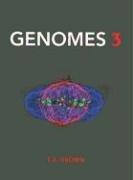| Listing 1 - 10 of 863 | << page >> |
Sort by
|

ISBN: 0674009304 Year: 2002 Publisher: Cambridge (Mass.) : Harvard university press,
Abstract | Keywords | Export | Availability | Bookmark
 Loading...
Loading...Choose an application
- Reference Manager
- EndNote
- RefWorks (Direct export to RefWorks)
Book
Year: 2020 Publisher: Basel : MDPI - Multidisciplinary Digital Publishing Institute,
Abstract | Keywords | Export | Availability | Bookmark
 Loading...
Loading...Choose an application
- Reference Manager
- EndNote
- RefWorks (Direct export to RefWorks)
Repetitive DNA is ubiquitous in eukaryotic genomes, and, in many species, comprises the bulk of the genome. Repeats include transposable elements that can self-mobilize and disperse around the genome, and tandemly-repeated satellite DNAs that increase in copy number due to replication slippage and unequal crossing over. Despite their abundance, repetitive DNA is often ignored in genomic studies due to technical challenges in their identification, assembly, and quantification. New technologies and methods are now providing the unprecedented power to analyze repetitive DNAs across diverse taxa. Repetitive DNA is of particular interest because it can represent distinct modes of genome evolution. Some repetitive DNA forms essential genome structures, such as telomeres and centromeres, which are required for proper chromosome maintenance and segregation, whereas others form piRNA clusters that regulate transposable elements; thus, these elements are expected to evolve under purifying selection. In contrast, other repeats evolve selfishly and produce genetic conflicts with their host species that drive adaptive evolution of host defense systems. However, the majority of repeats likely accumulate in eukaryotes in the absence of selection due to mechanisms of transposition and unequal crossing over. Even these neutral repeats may indirectly influence genome evolution as they reach high abundance. In this Special Issue, the contributing authors explore these questions from a range of perspectives.
Book
Year: 2020 Publisher: Basel : MDPI - Multidisciplinary Digital Publishing Institute,
Abstract | Keywords | Export | Availability | Bookmark
 Loading...
Loading...Choose an application
- Reference Manager
- EndNote
- RefWorks (Direct export to RefWorks)
Repetitive DNA is ubiquitous in eukaryotic genomes, and, in many species, comprises the bulk of the genome. Repeats include transposable elements that can self-mobilize and disperse around the genome, and tandemly-repeated satellite DNAs that increase in copy number due to replication slippage and unequal crossing over. Despite their abundance, repetitive DNA is often ignored in genomic studies due to technical challenges in their identification, assembly, and quantification. New technologies and methods are now providing the unprecedented power to analyze repetitive DNAs across diverse taxa. Repetitive DNA is of particular interest because it can represent distinct modes of genome evolution. Some repetitive DNA forms essential genome structures, such as telomeres and centromeres, which are required for proper chromosome maintenance and segregation, whereas others form piRNA clusters that regulate transposable elements; thus, these elements are expected to evolve under purifying selection. In contrast, other repeats evolve selfishly and produce genetic conflicts with their host species that drive adaptive evolution of host defense systems. However, the majority of repeats likely accumulate in eukaryotes in the absence of selection due to mechanisms of transposition and unequal crossing over. Even these neutral repeats may indirectly influence genome evolution as they reach high abundance. In this Special Issue, the contributing authors explore these questions from a range of perspectives.
Periodical
Abstract | Keywords | Export | Availability | Bookmark
 Loading...
Loading...Choose an application
- Reference Manager
- EndNote
- RefWorks (Direct export to RefWorks)
"Genome Integrity publishes research on all aspects of genome integrity, the cellular processes underlying maintenance of genome stability, and the effects of instability."
Book
Year: 2020 Publisher: Basel : MDPI - Multidisciplinary Digital Publishing Institute,
Abstract | Keywords | Export | Availability | Bookmark
 Loading...
Loading...Choose an application
- Reference Manager
- EndNote
- RefWorks (Direct export to RefWorks)
Repetitive DNA is ubiquitous in eukaryotic genomes, and, in many species, comprises the bulk of the genome. Repeats include transposable elements that can self-mobilize and disperse around the genome, and tandemly-repeated satellite DNAs that increase in copy number due to replication slippage and unequal crossing over. Despite their abundance, repetitive DNA is often ignored in genomic studies due to technical challenges in their identification, assembly, and quantification. New technologies and methods are now providing the unprecedented power to analyze repetitive DNAs across diverse taxa. Repetitive DNA is of particular interest because it can represent distinct modes of genome evolution. Some repetitive DNA forms essential genome structures, such as telomeres and centromeres, which are required for proper chromosome maintenance and segregation, whereas others form piRNA clusters that regulate transposable elements; thus, these elements are expected to evolve under purifying selection. In contrast, other repeats evolve selfishly and produce genetic conflicts with their host species that drive adaptive evolution of host defense systems. However, the majority of repeats likely accumulate in eukaryotes in the absence of selection due to mechanisms of transposition and unequal crossing over. Even these neutral repeats may indirectly influence genome evolution as they reach high abundance. In this Special Issue, the contributing authors explore these questions from a range of perspectives.
Book
ISBN: 0120576201 Year: 1992 Publisher: London,San Diego : Academic Press,
Abstract | Keywords | Export | Availability | Bookmark
Periodical
Abstract | Keywords | Export | Availability | Bookmark
Periodical
Abstract | Keywords | Export | Availability | Bookmark

ISBN: 0815341385 9780815341383 Year: 2007 Publisher: New York (N.Y.) : Taylor and Francis,
Abstract | Keywords | Export | Availability | Bookmark
 Loading...
Loading...Choose an application
- Reference Manager
- EndNote
- RefWorks (Direct export to RefWorks)
Covering molecular genetics from the basics through to genome expression and molecular phylogenetics, Genomes 3 is the latest edition of this pioneering textbook. Newly updated to incorporate the recent major advances, Genomes 3 is an invaluable companion for any undergraduate throughout their studies in molecular genetics. Genomes 3 builds on the achievements of the previous editions putting genomes, rather than genes, at the center of molecular genetics teaching. Recognizing that molecular biology research was being driven more by genome sequencing and functional analysis than by research into genes, this approach has gathered momentum in recent years. The new edition has been significantly restructured and updated to incorporate recent major advances. Key Features: BL two NEW chapters on genome anatomies, covering the latest sequencing achievements BL NEW chapter on genome function, to describe the latest technologies used in studying the transcriptome and the proteome BL new chapter on recombination, providing expanded coverage of genome evolution BL major restructuring of chapter order, to align the book more closely to the practical reality of molecular genetics courses BL newly designed and significantly expanded end-of-chapter exercises, including multiple-choice questions and innovative figure tests BL newly re-drawn artwork, with the emphasis throughout on simplicity and scientific consistency BL FREE CD-ROM of the artwork supplied with every copy One of the outstanding features of the book is the clarity of style and presentation. The artwork has been entirely re-drawn for the third edition, with the emphasis throughout on simplicity and scientific consistency. Genomes 3 provides the reader with a simple and elegant treatment of this fast-moving and rapidly expanding field.
Article
Abstract | Keywords | Export | Availability | Bookmark
 Loading...
Loading...Choose an application
- Reference Manager
- EndNote
- RefWorks (Direct export to RefWorks)
| Listing 1 - 10 of 863 | << page >> |
Sort by
|

 Search
Search Feedback
Feedback About UniCat
About UniCat  Help
Help News
News